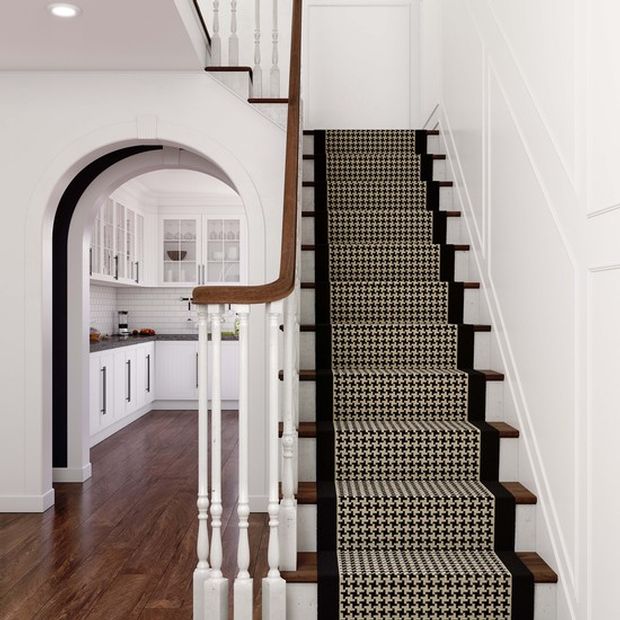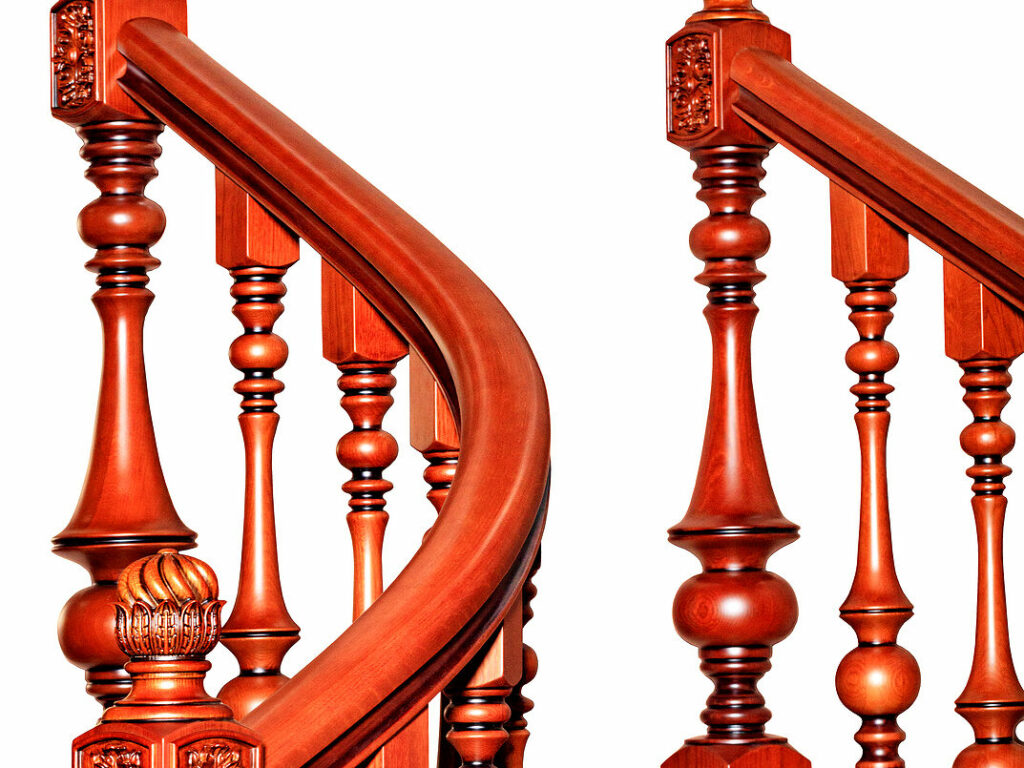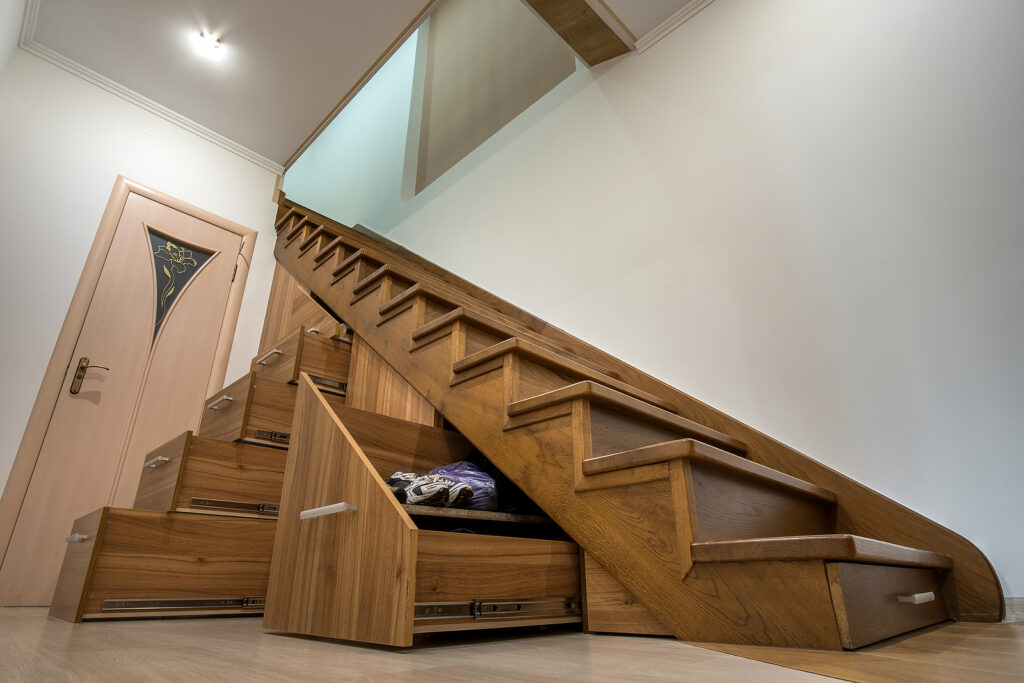The Different Parts of a Staircase Explained

When you’re thinking about renovating your staircase, installing a new staircase, or just changing elements of it, it’s useful to know what the parts of a staircase are actually called. It can be a little overwhelming when you’re researching and you’re facing jargon and ridiculous levels of detail about stair parts you’ve never heard of.
So, as experts in stairs, we’ve put together this simple guide to the essential staircase component parts, including their names and function.
What Are the Parts of the Staircase Called?
Here, we’ve broken down the names of the parts of the staircase and explained their functionality.
What Makes up a Balustrade?

‘Balustrade’ is a handy word that you’ll commonly come across in content about stairs and staircases. It refers to all of the collective parts of a finished staircase: the base rail, spindles, handrail, and newel posts.
These can come in a range of materials, like wood, glass and metal. Generally, these components or parts of the staircase are called by the same names:
String/stringer board
This is the panel on the side of the staircase that the treads and risers are fixed into (more on those below).
- The inner string is the side of the staircase set against the wall.
- The outer string refers to the side of the staircase where the treads and riser appear.
- A closed string staircase is one where these edges of the steps are actually hidden.
- A cut string staircase (also called an open string) means the side of the steps are visible or even overhanging the string.
- String capping is the mould that covers the top of the string that’s nearest to the wall.
Base rail
The base rail is at the bottom of the balustrade and sits on top of the string, running the length of the flight of stairs.
Handrail
The handrail, also called stair rail or the bannister, is placed atop the balusters and spindles, running parallel to the base rail. A handrail can also be attached to the wall. On wall-mounted handrails, handrail brackets are used to attach the rail to the wall and decorative caps can also be placed on the ends.
Spindle
Spindles (sometimes called balusters) are the vertical posts that sit between the base rail and handrail. There are a number of different spindle types and they can be one of the most decorative parts of the staircase. Browse our staircase spindle ideas for more information and inspiration.
Newel post
The newel post is the large vertical beam, or post, that goes at the top and at the bottom of the flight of stairs, or at key junctures where a change of direction happens. It functions to support the handrail. Like spindles, Newels come in a range of styles.
- Half newels: You’ll sometimes see half newel posts on landings where the staircase meets a wall. These are usually half the size of the regular newel post, hence the name.
- Newel cap: This is the cap on top of the newel post, and can be very decorative depending on the style of staircase you’re going for.
- Continuous newel post: This is where the handrail continuously runs over the newel post.
What Components Make Up the Steps in Your Staircase?

The number of different elements to the steps of your stairs might surprise you. The treads and risers make up the main components of the steps:
Treads
The tread of a stair refers to the flat horizontal surface of a step that you place your feet on.
Risers
Risers are the vertical parts between the steps – the parts you don’t step on. You can have staircases without risers, creating an open spacious look.
Nosing
Stair nosing is the protruding edge of the stair (usually in hardwood or laminate staring) and can either be built into the tread or come in the form of a strip that’s connected to the stair. to make it visible and safer. Stair nosing is generally a legal requirement in public buildings and functions to make the stairs more visible and safer to use. You can read our helpful guide to stair nosing to find out more. If you’re thinking about stair nosing, have a browse through our superb selection of stair nosing strips to see all the different styles available.
Run
The run is the length of the tread and nosing together.
Pitch
The pitch of the stairs refers to the angle of the stair slope. It’s important because taking in the steepness of the stairs is a safety and functionality concern.
Curtail step
A curtail step is the starting step of a staircase, located at the bottom, which is often widened at one or both ends.
How We Can Help Enhance Your Staircase Elements

The staircase in any home is one of the most important interior design elements. Staircases can be the grand centrepiece of your house and the first thing guests see when they walk in. That’s why it’s important to get it right.
With our premium range of staircase accessories, we can help you elevate every part of your staircase. After all, it’s the small details that count. We have high-quality products that provide flawless finishing touches, like stair rods, door thresholds and carpet runners, all in stunning finishes.
Browse our website to find the perfect stair accessory for you and transform the look of your home today. Every order over £75 comes with free UK delivery.
And if you’ve found our staircase parts explained article helpful and you’re looking for more advice from experts, check out our extensive advice section.


